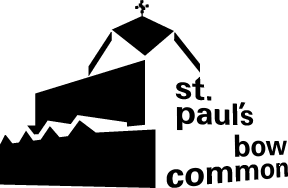|
The mosaics encircling the walls are the work of Charles Lutyens, greatâ€nephew of the architect Edwin Lutyens, carried out over a period of five years 1963 - 1968. Charles reflected on how to represent the 'Heavenly Host'. In the Christian and Jewish tradition angels have various functions and duties. Some act as Divine Messengers. Others surround the Divine Being with ceaseless worship and praise, these are the 'Heavenly Host' - who were to be represented on the spandrels prepared above each of the pillars to receive them. Charles Lutyens visited the island of Murano in Venice, fabled for its production of mosaic tesserae, and chose 700 colours as the palette from which he would work. He began in 1963 and during the next five years Charles worked on this huge expanse of 800 square feet, day by day, piece by piece, saying “I had placed each individual tessera with feeling and intuition, allowing the colours, as it were, to ‘call me.’” Twelve angels make up the mural, and each corner represents an elemental creature for Earth, Air and Water and an abstract for Fire.
|




 He finished this enormous work just as the funds ran out, but in his mind the work was unfinished and so to express his dissatisfaction he left a small patch of raw cement up in the south-west corner. After 43 years, at the age of 78, he added the missing piece; here was final closure on this work, with the second eye of the 'Earth Creature' being finally 'opened', now to look out upon the church and its ongoing life through the initials 'CL' (Charles Lutyens) which now form that eye of the Earth Creature.
He finished this enormous work just as the funds ran out, but in his mind the work was unfinished and so to express his dissatisfaction he left a small patch of raw cement up in the south-west corner. After 43 years, at the age of 78, he added the missing piece; here was final closure on this work, with the second eye of the 'Earth Creature' being finally 'opened', now to look out upon the church and its ongoing life through the initials 'CL' (Charles Lutyens) which now form that eye of the Earth Creature.